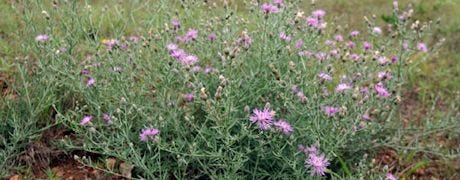May 19, 2013

Since the first report of spotted knapweed in southwest Missouri (in 2002) a number of groups have been working hard to control its spread.
"No doubt, spotted knapweed was probably around several years earlier than 2002 but it went undetected," said Eldon Cole, a livestock specialist with University of Missouri Extension.
University of Missouri Extension, Missouri Department of Transportation, Missouri Department of Conservation, and numerous county road districts have cooperated in teaching landowners what knapweed looks like, where it's located in the state and how to control it.
Thanks to the Missouri Legislature, spotted knapweed is now on Missouri's noxious weed list.

"No doubt, spotted knapweed was probably around several years earlier than 2002 but it went undetected," said Eldon Cole, a livestock specialist with University of Missouri Extension.
Knapweed control is not difficult. There are several herbicides that are effective when used in October or in the spring. Regular mowing can keep the plant from producing seed. Spring applications should be made before the plant bolts.
"Biological control also offers hope. Beneficial weevils have been released over the last 3 or 4 years. Biological control however is slow and herbicide use will have a more immediate impact," said Cole.
Herbicide control
The herbicide treatment of spotted knapweed patches can be done in late fall or early spring. Its greatest control occurs when the plant is less than 12 to 15 inches tall. Due to the late spring, many knapweed plants are still in the vulnerable stage.
The plant puts out attractive lavender to purple bloom in early June. Cole says this may be a good time to identify it and make note of those locations for treatment in the fall when the plant is in the rosette stage.
"Remember to watch hay fields closely and know if knapweed is in them. Be careful to not spread the seed across your farm or don't sell infected hay to a neighbor," said Cole. "My recommendation is keep after spotted knapweed and don't let it become established on your property."
Source: MU Extension
You May Also Like




